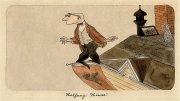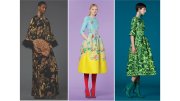Running shoes were supposedly designed to help people run long distances without getting injured, but Daniel Lieberman's research suggests humans were doing just fine long before arch supports and shock absorbers were added to their footwear.
In the pages of Harvard Magazine, Lieberman, a professor of anthropology, explained his theory that endurance running was one of the adaptations that gave our ancestors an advantage over other species competing for the same food. And in Sunday's New York Times, Lieberman joined the ranks of experts who think running shoes, at best, don't help much, and may even hurt. That article explored arguments for and against wearing "barefoot" running shoes, typically sheaths of rubber that protect the feet from broken glass and sharp rocks, but otherwise mimic the experience of running without any shoes—separated toes and all. But plenty of people disagreed with Lieberman's camp; one physician, the medical director for the New York Road Runners, told the Times, "In 95 percent of the population or higher, running barefoot will land you in my office."





